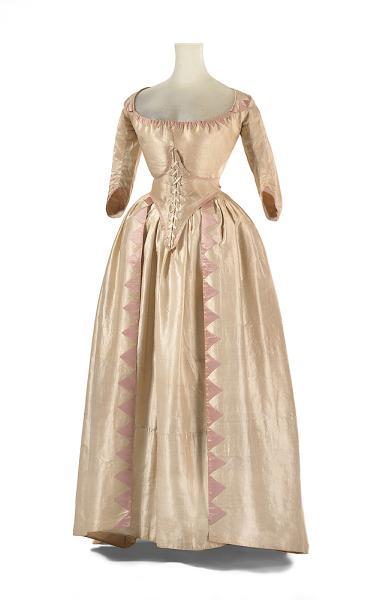The 1790's were characterized by many radical changes, and fashion was no exception. In fact, it's difficult to talk about the decade as a whole because clothing from the beginning of the decade differs so greatly from clothing around the turn of the century.
 |
| Aah, pretty. Source |
 |
| Also pretty. Source |
So how did we get from natural waists, tight corsets, and colored silks to pastels, muslins, and loose-fitting empire waist gowns? Zipzipinkspot.blogspot.com has an AMAZING two part blog post on the transition from 1780's fashion to the early Regency. It turns me into a green-eyed monster of jealousy. In a happy way. It's swell.
One thing I found in my 1790's research this week was the fichu (rhymes with 'tissue'), a triangular piece of gauze, netting, or lace pinned onto or tucked into a bodice for modesty during the day. I've seen them around in different Jane Austen adaptations educational films on the period, but I never knew what it was called.
This and the lighter muslins and linens (in comparison to the heavier, brightly colored silks of the 1770's and 80's) appear to be some of the only things that stay the same from the beginning of the 1790's to the end.
 |
| An early decade example of a fichu. Source. |
 |
| Source |
One thing that particularly interested me while researching this period was watching the waistline slowly creep up and bodices loosen as the decade went on. Two good examples of this are in the adaptations of Sense and Sensibility and Mansfield Park. Admittedly, the 2007 Mansfield Park is a little all over the place in terms of costumes (Fanny wears some mid and early decade waistlines, Mary Crawford's getups look like they're from the late Regency, the clothes worn by the Mrs. Norris and Lady Bertram look like they're from the 1780's, and the costumes for the play look like they're from the 1770's, leaving me with the question, "What is this madness?"), but Fanny is a good example of waistlines that are much lower than what we'll see later on in the Regency.
 |
| She looks a little squinty here. Source |
In Sense and Sensibility, the waistlines are closer to truly empire, but more structured and tailored than we'll see later.
 |
| Elinor and Mama Dashwood are both good examples in this image. Source. |
 |
| Marianne, with a gathered neckline that Zipzip explains in detail. Source. |
Skirts also changed, becoming more narrow as the decade wore on, and the train was becoming more and more common.
 |
| Beautiful train. Source. |
By the end of the decade, waistlines were high, sleeves were short, and hair was worn looser and curly. The hair powder that was so popular in court fashion in the 1770's and 80's was now completely out of style, and a new era of natural hair and loose clothing was ushered in. After the turn of the century, the skirt would narrow still more, and hairstyles would become more polished and tight, conforming to the inspiration of Greek statues. That's what we'll be looking at next week, when I study the years 1800-1810. And I'll probably use more Jane Austen images. Don't say I didn't warn you.
Rose. O.o
ReplyDeleteIndeed! Just watched that version of Mansfield the other day. I wasn't really impressed with it as an adaptation, but I really liked Billie as Fanny. I was afraid she'd be loud and proud like Rose, but she really nailed Fanny's shyness and sincerity.
Delete^I knew she looked familiar O_O
ReplyDelete